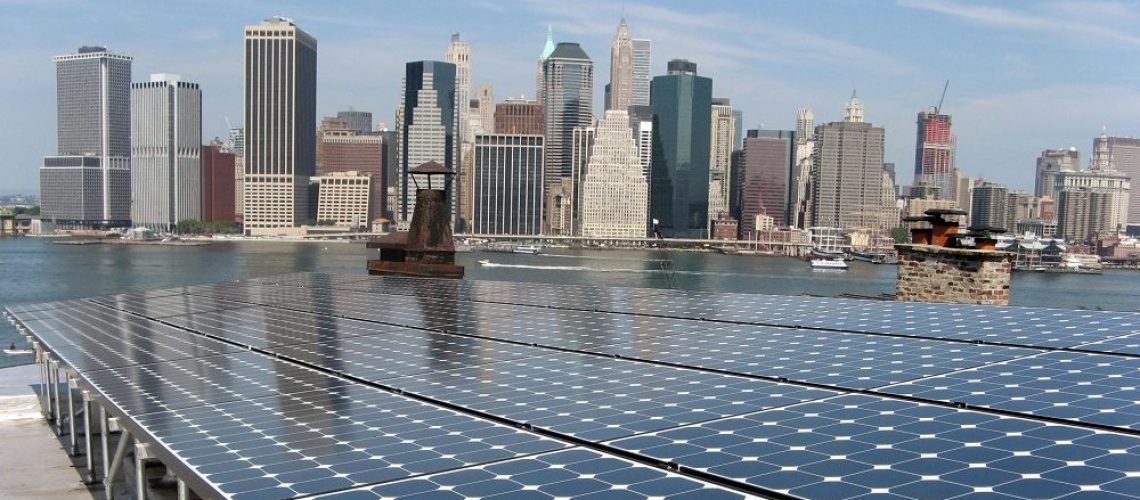Currently New York has a state target of 10 GW deployed by 2030. The state’s Solar Energy Industries Association has called for a new target of 20 GW of distributed solar by 2035.
The New York Solar Energy Industries Association (NYSEIA) has issued a report to Governor Kathy Hochul, requesting a raised target for the state’s distributed solar targets.
NYSEIA specifically requested an increased target for the buildout of distributed solar projects, which are typically installed on rooftops, carports or other built-environment locations for homes and businesses.
Under New York’s current climate strategy, the state targets 10 GW of distributed solar by 2030. NYSEIA has called for this to be doubled five years later, reaching 20 GW by 2035.
NYSEIA projects achieving this goal would lead to $50 billion in gross electric bill savings; $3 to $4 billion in revenue for rural landowners, municipalities and school districts; and support an additional 15,000 jobs in the solar industry.
New York is a leader in distributed solar buildout. About 90% of the state’s solar capacity is distributed, a much higher percentage than solar heavy states like California and Texas that have invested heavily in large, centralized utility-scale projects.
New York added more than 800 MW of distributed solar capacity last year alone and is on track to surpass 6 GW by the end of 2024, one year ahead of schedule.
“Scaling up distributed solar deployment will deliver cost-effective progress toward New York’s overall climate goals while delivering immense benefits to New York’s environment, economy, and working families,” said Noah Ginsburg, executive director, NYSEIA.
In 2019, New York enacted the Climate Leadership and Community Protection Act (CLCPA), directing New York to be powered with 70% renewable energy by 2030, 100% renewable energy by 2040, and a carbon neutral economy by 2050.
Since then, a wave of high-profile utility-scale renewable project cancellations has jeopardized the feasibility of achieving 70% renewable energy by 2030, said NYSEIA.
“As New York struggles to meet its ambitious renewable energy mandates, legislative leaders and regulators must take decisive action,” said Ginsburg.
In 2023, Governor Hochul enacted a 10-point action plan to get utility-scale renewable projects back on track. However, NYSEIA said while utility-scale projects are important, they are not enough to meet New York’s mandates. To double solar cumulative solar deployment in six short years, distributed rooftop solar can be deployed rapidly to fill the gap.
There is hope yet for New York to achieve its climate goals. Solar deployment has grown at an average 31% annual growth from 2013-2022. To reach the new 20 GW by 2035 goal, the state will need to sustain 7-10% annual growth in deployment. NYSEIA said this was driven in part by the state’s leading community solar program.
NYSEIA advocates for the following policy changes to achieve the goal:
- Interconnection reform and flexible interconnection to lower clean energy costs and accelerate deployment
- Streamlined permitting for rooftop and community solar
- Virtual power plant programs and dynamic rate design to compensate distributed solar and energy storage for exporting power when and where it’s needed
- Continued investment in New York’s nation-leading community solar programs to provide even more direct bill savings to low-income New Yorkers
“Distributed solar has performed so well in New York because it fits the nature of our state,” said Senator Pete Harckham, chair of the environmental conservation committee. “We have a unique mix of urban, suburban, and rural communities that can support a diverse portfolio of renewable energy projects, and it’s time we lean into our character as a state.”
Find the full roadmap here.



